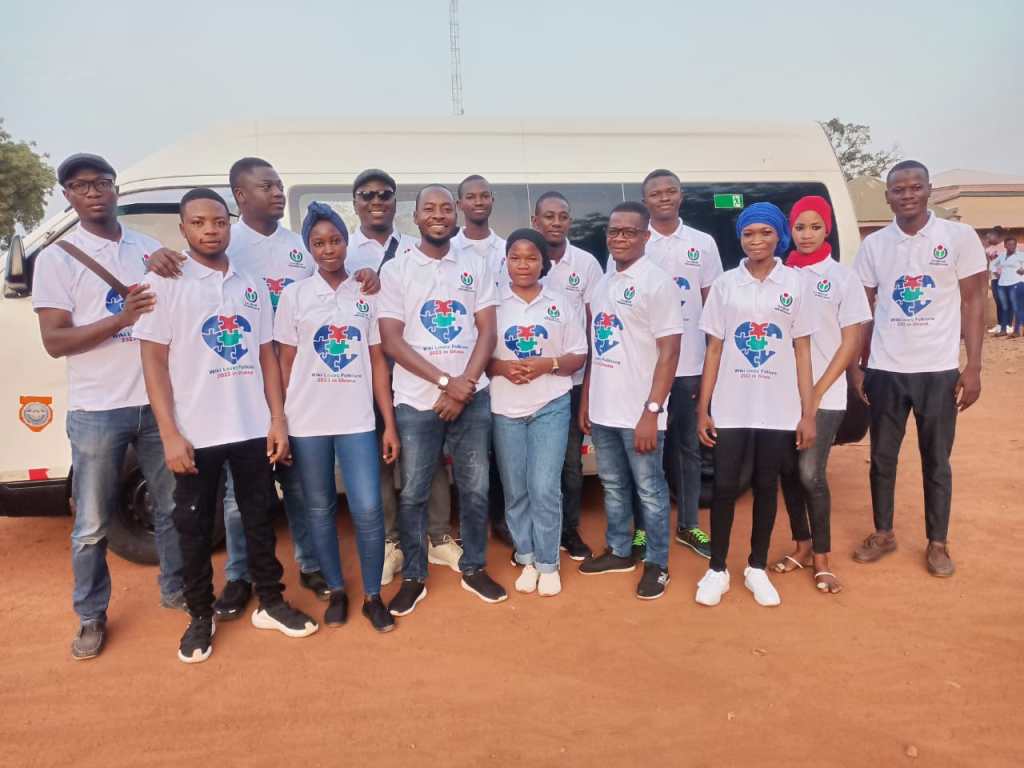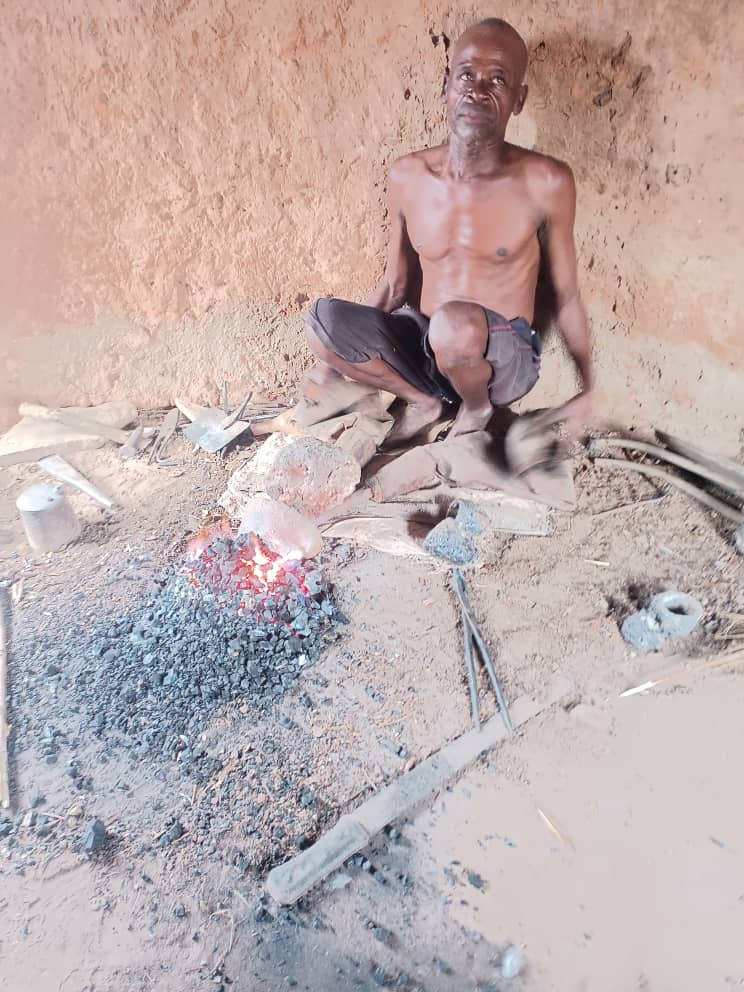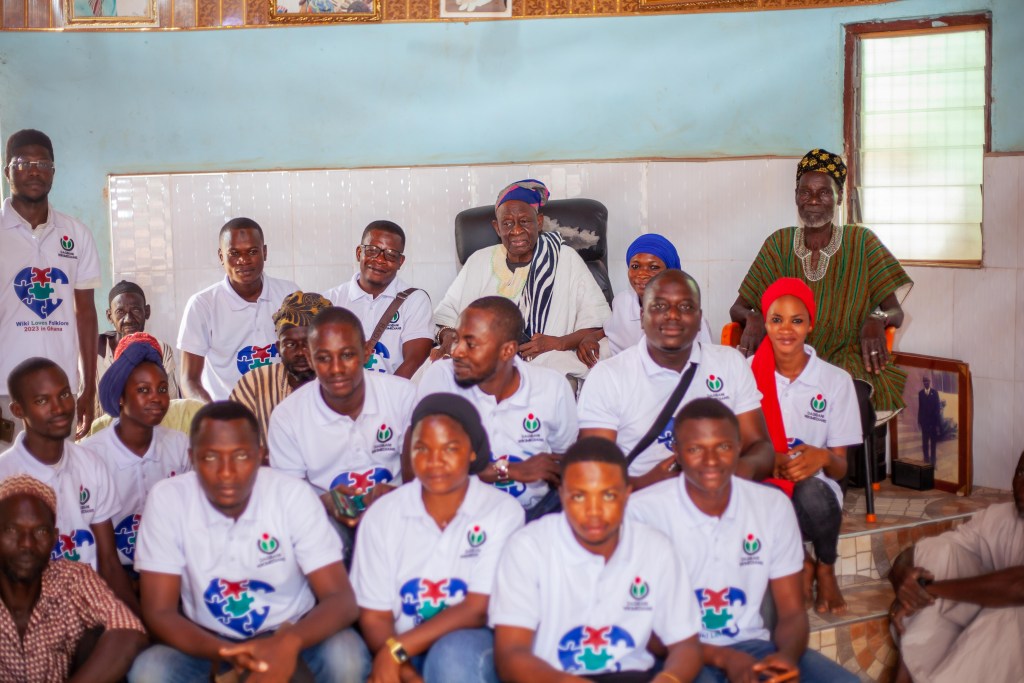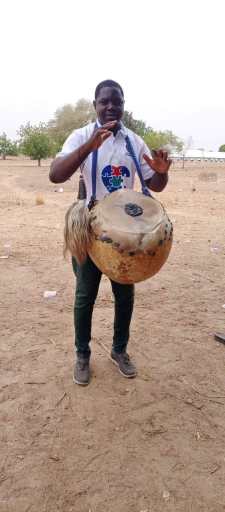Wiki Loves Folklore (WLF) is an annual international photographic competition held during February, organized worldwide by various Wikimedia communities and affiliates across the globe. During this event, participants take pictures of folk cultures and intangible heritage materials in their regions and upload them to Wikimedia Commons. The event aims to document folklore traditions around the world and to encourage people to capture images of their folk culture and upload them onto Wikimedia Commons under a free license, which can then be re-used not only in Wikipedia but everywhere by everyone.
On March 18, 2023, some members of the Moore Wikimedia Community and Dagbani Wikimedians User Group embarked on a Wiki Loves Folklore 2023 photo walk to capture the various folklore activities in the Tolon District of Northern Ghana. After a 45-minute drive, the group arrived at Yoggu. Their first stop in that community was at the house of “Mba Wulana” (Deputy Chief), where the mission of the group was communicated to him, and they were further taken to the Chief’s palace, where the group’s mission was emphasized again. The Chief took them through some historical journeys of blacksmithing as well as the history behind the local warriors called “Sapahinima.” The group learned from him that blacksmithing was one of the primary activities in the community.
The Mba Wulana then informed the Chief, Alhaji Adam Iddrisu, about the group’s mission. The chief accepted the group and called upon his subjects, who were engaged in blacksmithing, to welcome the visitors and provide them with any necessary information they sought about their work. The group was then allowed to visit the blacksmiths’ centers to learn more about their work. They explained that they could use metals to create various tools such as rings, hoes, knives, and many more. There were some practical exhibitions of their work for the group to see.
From the blacksmith’s center, the group passed through the house of one of the warrior chiefs of the community (Mba Achiri), where they observed the production of gunpowder. There was a demonstration of how it was made, and the group observed the processes from beginning to end. The gunpowder produced was tested to ensure its efficiency before being presented to the group. This experience provided the Wikimedians with a deeper understanding of the cultural heritage activities taking place in the Tolon District of Northern Ghana.
The group also had the opportunity to learn about the history of the community from the chief, Alhaji Adam Iddrisu. He explained that Yoggu was the birthplace of blacksmithing in Dagbon, as their ancestors had brought the craft from Gambaga in the North-East region. The chief went on to provide further details about the community’s history, allowing the group to gain a deeper appreciation of the various folk cultures in the area. By learning about the traditions and practices that have been passed down through generations, the group of Wikimedians on this photo hunt expedition gained insight into the available folk activities around the area.
Participants also learned about the current state of blacksmithing in Dagbon during this event. They discovered that the leader (chief) of the Dagbon blacksmiths, whose name is Faamuru, is currently located in Kpatinga. The group was amazed to learn that Faamuru possesses the unique ability to sit on a naked flame of fire without being burned. This remarkable skill has made him a highly respected figure in the community and has helped to keep the traditional craft of blacksmithing alive in Dagbon. The Wikimedians were grateful for the opportunity to learn about the current state of blacksmithing in Dagbon and to witness the incredible abilities of one of its most prominent practitioners.
Participants had the opportunity to visit Sonaa, the chief of blacksmiths in the community. Sonaa was eager to showcase his skill, and the group was amazed by the intricate metalwork he had created. He demonstrated how he uses metals to make various tools and objects, such as rings, hoes, and knives, among others. The Wikimedians were impressed by the attention, the elaborations, and the level of craftsmanship that went into each piece. By capturing images of Sonaa’s metalwork, the group was able to document and preserve a key aspect of the community’s cultural heritage. The experience was a reminder of the importance of cultural preservation and the role that traditional crafts such as blacksmithing play in shaping the identities of communities around the world.
Participants returned to the chief’s palace, where they were treated to a cultural event known as Tuhiŋmambuɣu. The event was organized by the chief and involved the participation of female children from the community. The children held a calabash filled with cola and sang the song Tuhimambugu as they crawled on their knees and passed the calabash to each other in various styles. This unique performance was a powerful example of the rich cultural heritage that exists within the community. The Wikimedians were grateful for the opportunity to witness this traditional event and photograph it for use on Wikimedia Commons. By sharing their experiences and images with the world through Wikipedia, they hope to promote a deeper appreciation for the diverse cultural traditions that exist in Northern Ghana.
The group left the Yoggu community and headed to another community named Gbanjong. Here, the group discovered another old traditional craft that was still practiced in the community – pottery making. The Wikimedians were warmly received by the community members, who showed them how they use clay to create various objects such as pots, poultry water troughs, and others.
The group observed how the women in the community skillfully molded the clay into different shapes and sizes using their hands and simple tools such as wooden paddles and stones. They were amazed by the level of skill and precision that was required to make each object. The Wikimedians were impressed by the importance that pottery-making holds in the community, as it is a vital aspect of the local economy and an important way of preserving the community’s cultural heritage.
As they took photographs of the various pottery items on display, the Wikimedians were grateful for the opportunity to document and share this aspect of the community’s cultural heritage with the world. They recognized that preserving these traditional crafts was essential to maintaining the unique identity of the community and that sharing this knowledge with the world through platforms such as Wikipedia could help to raise awareness of the importance of cultural heritage preservation.
Before leaving Gbanjong, the group thanked the community for their warm reception and for sharing their knowledge and skills with them. The Wikimedians recognized the value of the cultural exchange that had taken place and expressed their gratitude for the opportunity to learn about the community’s traditional crafts. As they continued their photo walk through the Tolon District, the Wikimedians were left with a profound appreciation for the rich cultural heritage that exists in Northern Ghana and the importance of documenting and preserving it for future generations.
The group had spent the day documenting various aspects of cultural heritage in the Tolon District, including blacksmithing, gunpowder making, pottery making, traditional dances, and other cultural events.
The Gurene Wikimedia Community in Perspective
On March 18, 2023, a team of 13 participants gathered in Bolgatanga, in the Upper East region of Ghana, to take part in the annual Wiki Loves Folklore 2023 campaign. This campaign aims to capture images of traditional and cultural events from around the world and share them on Wikimedia Commons.
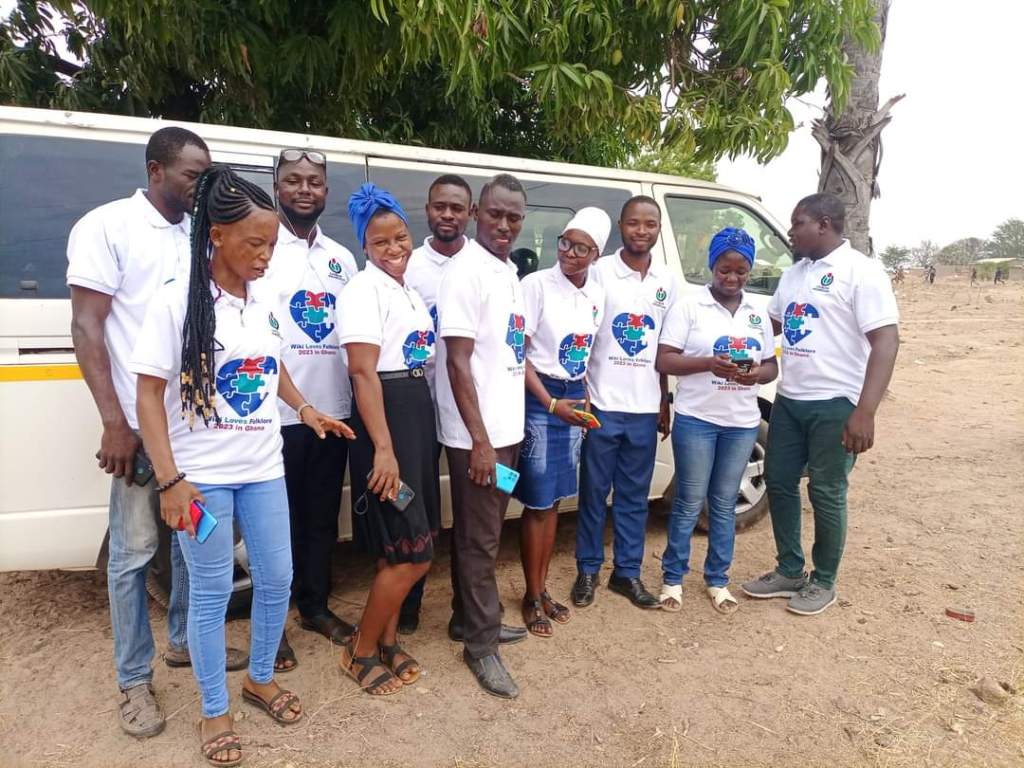
The team started their journey at 9 a.m., and they were all excited and ready to explore the region, document its culture, and share its beauty with the world. The first stop was Sombrungu, a small village known for the unique architectural design of its buildings, which feature mud and thatch roofing. The team was amazed by the beauty of the village and how the locals were able to preserve their traditions.
Next, they visited Bongo, a town known for its artistic and musical talent. They were fascinated by the musical instruments the locals used and the way they played them. The team had the opportunity to capture images of the locals in action, playing their instruments and singing traditional songs.
After Bongo, the team headed to Zuarungu, a village known for its skilled craftsmen. They observed the locals weaving baskets, mats, and other traditional crafts. The team was amazed by the level of skill and creativity displayed by the locals in their craft.
The final destination was the Ghana-Burkina Faso border, where the team had the opportunity to capture images of the bustling trade activity between the two countries. The border is a melting pot of different cultures, languages, and traditions, and the team was able to capture images of the vibrant scene.
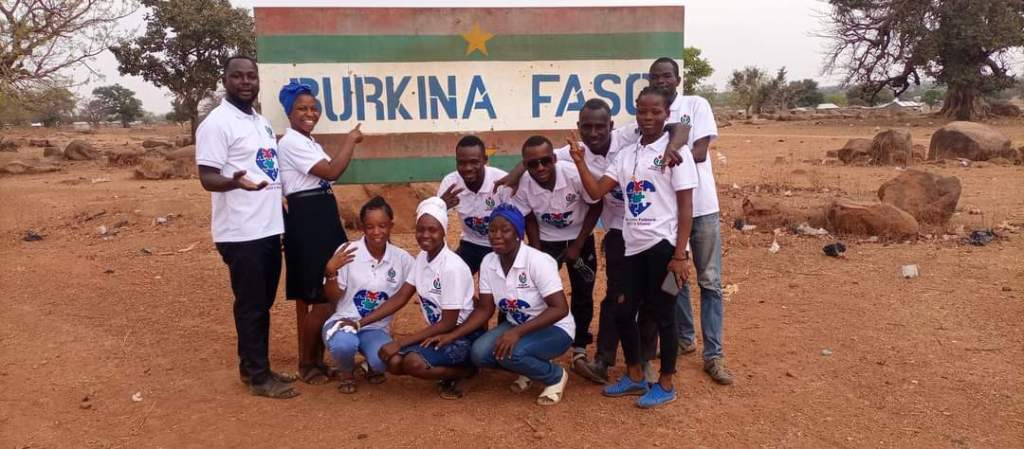
After an eventful day, the team returned to Bolga at 5 p.m. They were exhausted but fulfilled, having captured the essence of the region and documented its culture. The images they captured will be shared on Wikimedia Commons as part of the Wiki Loves Folklore 2023 campaign, where they will be available for everyone to see and learn from.
In conclusion, the photo walk organized in Bolgatanga as part of the Wiki Loves Folklore 2023 campaign was a great success. The team had a wonderful time exploring the region, learning about its culture, and capturing its beauty. As the participants went their separate ways and returned to their homes, they were left with a sense of accomplishment and fulfillment, knowing that they had contributed to the preservation and sharing of cultural heritage knowledge. They looked forward to continuing their work as Wikimedians, documenting and sharing the stories of cultural heritage from around the world. The images they captured will serve as a visual record of the culture and traditions of the region and will be available for everyone to learn from and appreciate.
The Global Open Initiative Foundation in Perspective
A photowalk is usually fun, but when you combine it with cultural events and festivals, the result is something truly special. The Global Open Initiative Foundation (GOIF) and Ghanaian photographer Kwame Ghana had the pleasure of leading a photowalk with a group of participants to some of the cultural events in Ghana over the weekend preceding the country’s Independence Day celebration. We began in Jamestown with the Kenkey Festival, where we captured the colorful and lively celebration of the traditional dish. On Monday, March 6th, on which we celebrate Ghana’s Independence, we ended our photowalk at the Akwaaba Festival (a celebration of Ghanaian culture featuring traditional food, music, dance, and fashion), where we captured the joy and energy of traditional dances such as Adowa and Butchers Dance. It was such a memorable experience!
In conclusion, the photo walk organized in the various regions as part of the Wiki Loves Folklore 2023 campaign was a great success. The team had a wonderful time exploring the regions, learning about its culture, and capturing its beauty. As the participants went their separate ways and returned to their homes, they were left with a sense of accomplishment and fulfillment, knowing that they had contributed to the preservation and sharing of cultural heritage knowledge. They looked forward to continuing their work as Wikimedians, documenting and sharing the stories of cultural heritage from around the world. The images they captured will serve as a visual record of the culture and traditions of the region and will be available for everyone to learn from and appreciate.
[Ed note – the last section was added post-publication to better conclude the article]

Can you help us translate this article?
In order for this article to reach as many people as possible we would like your help. Can you translate this article to get the message out?
Start translation
